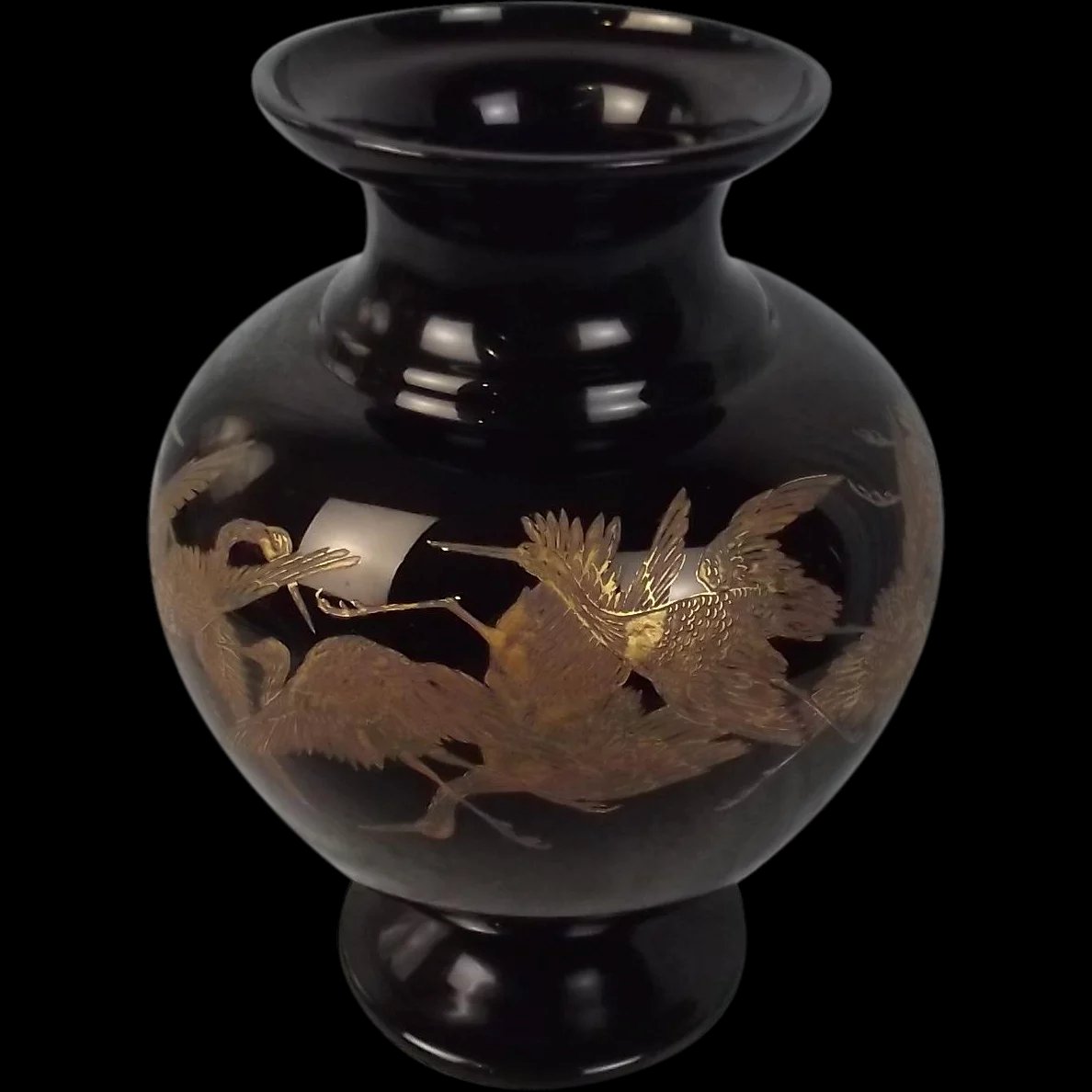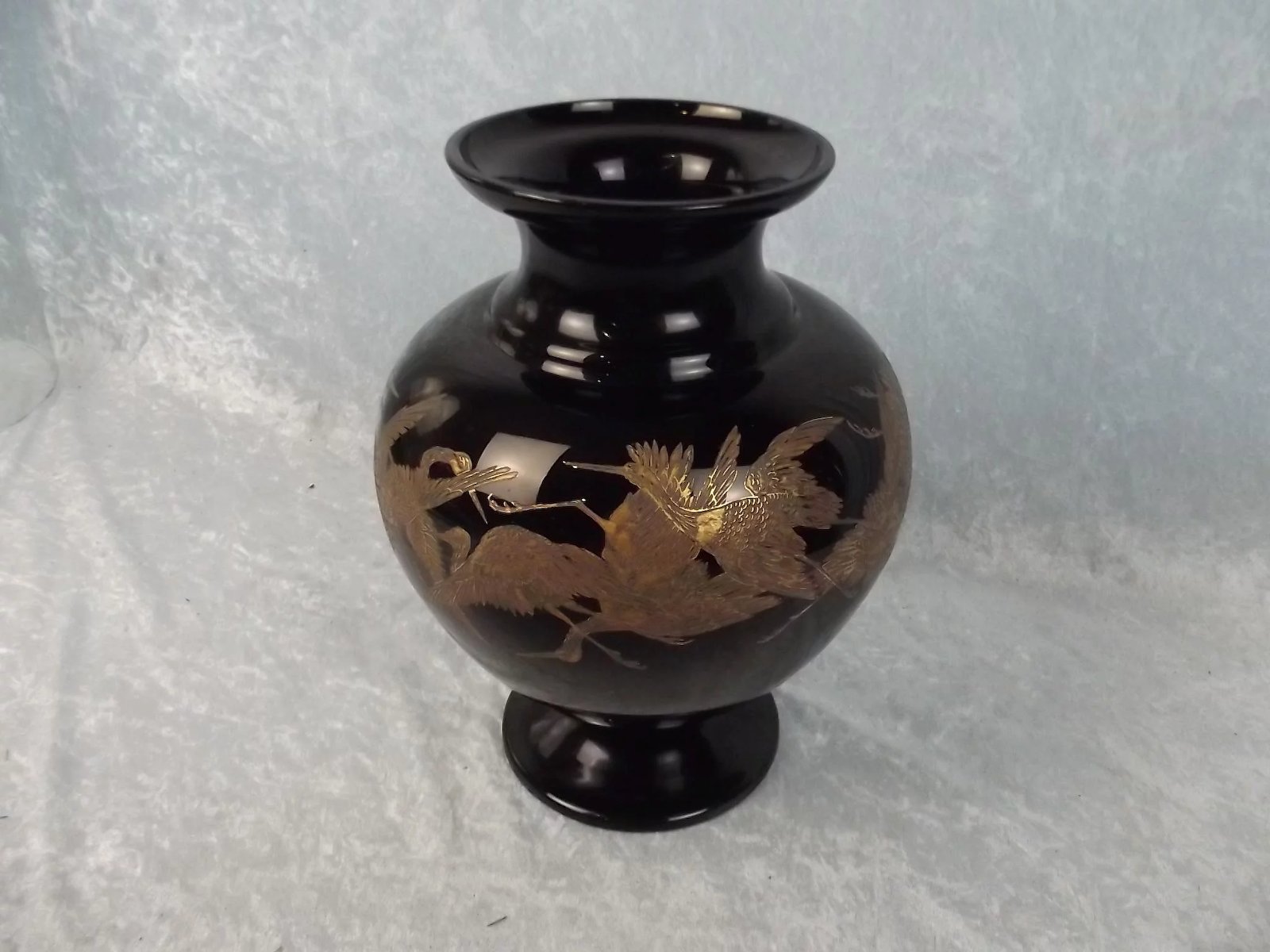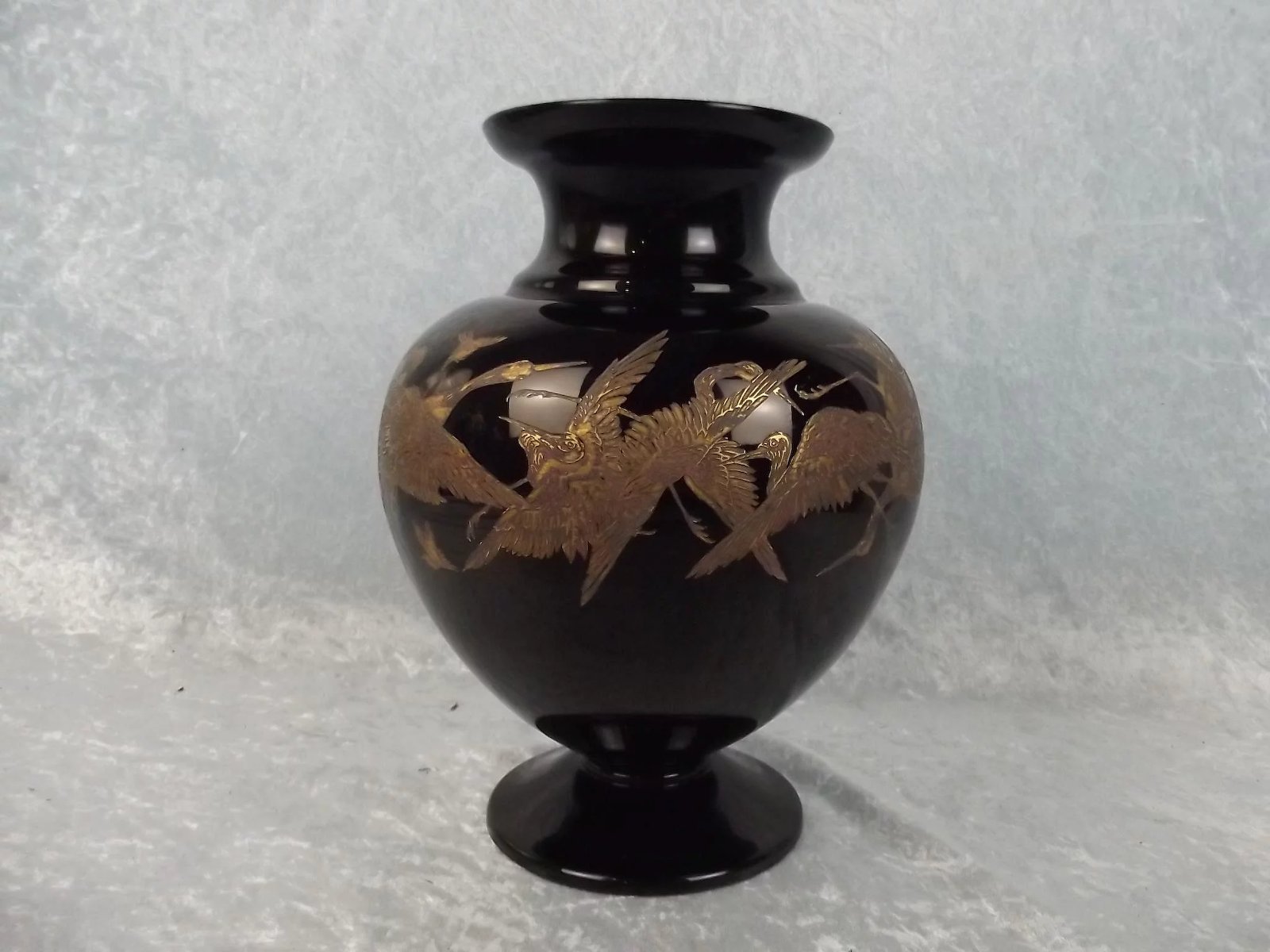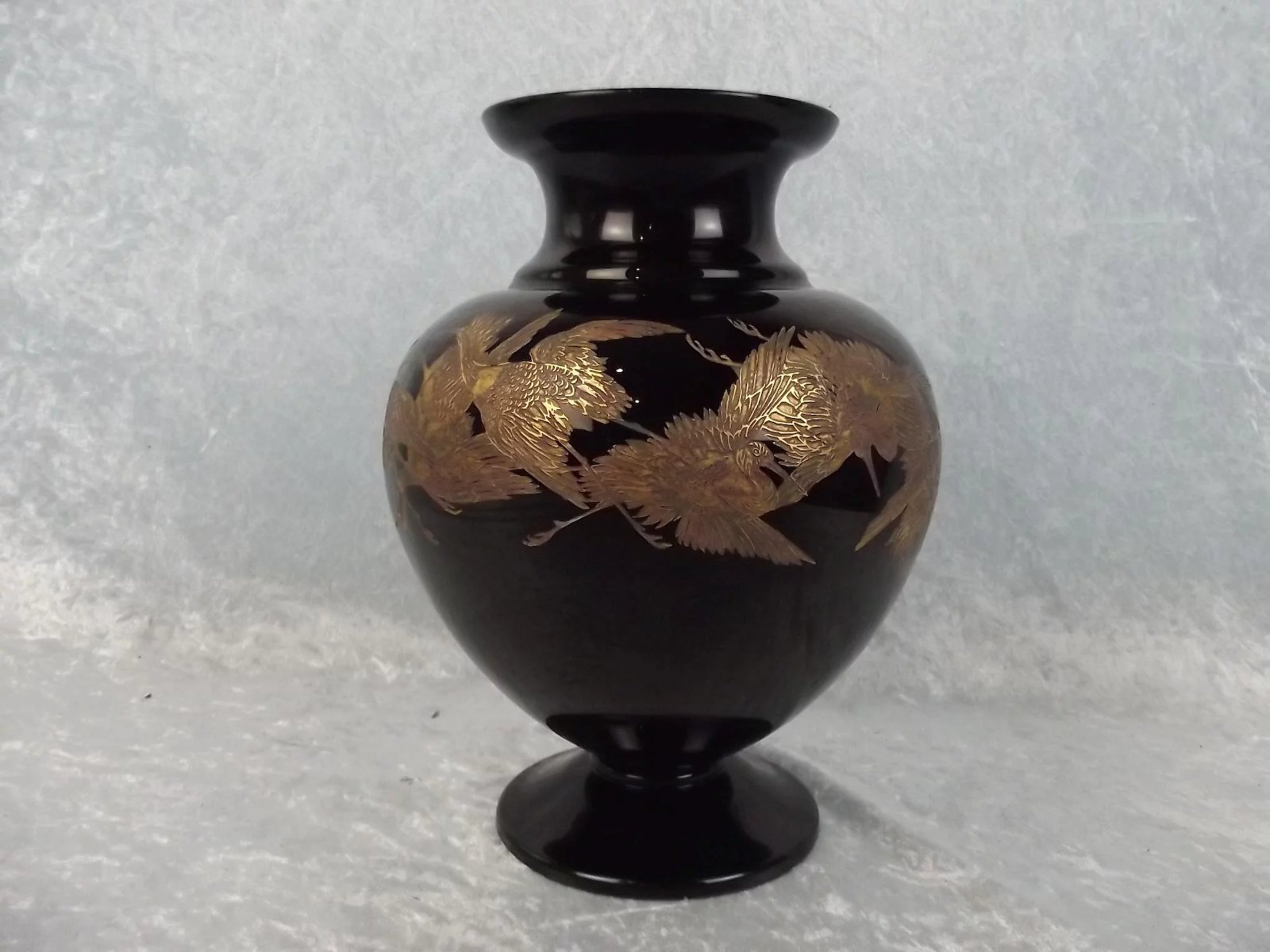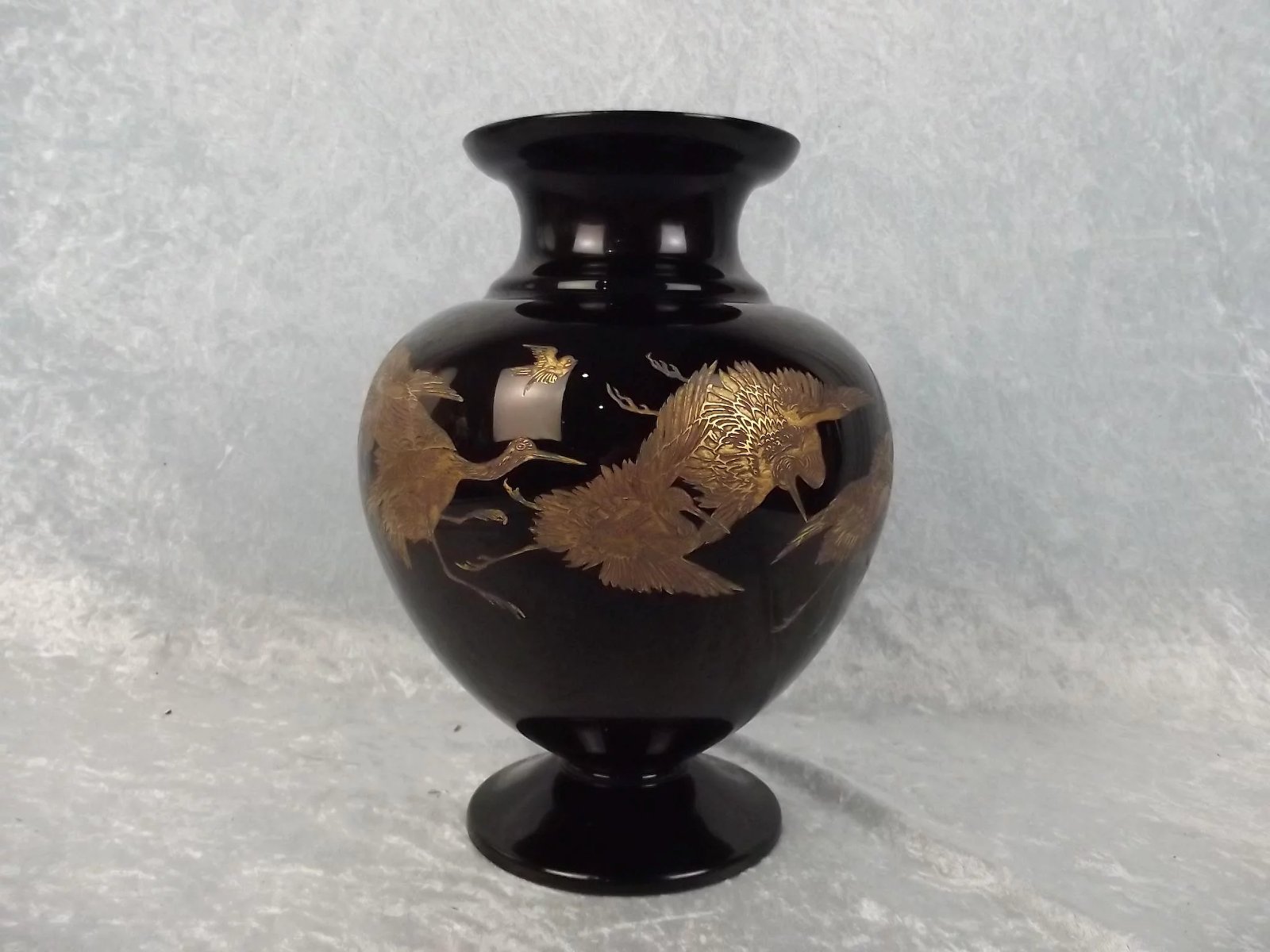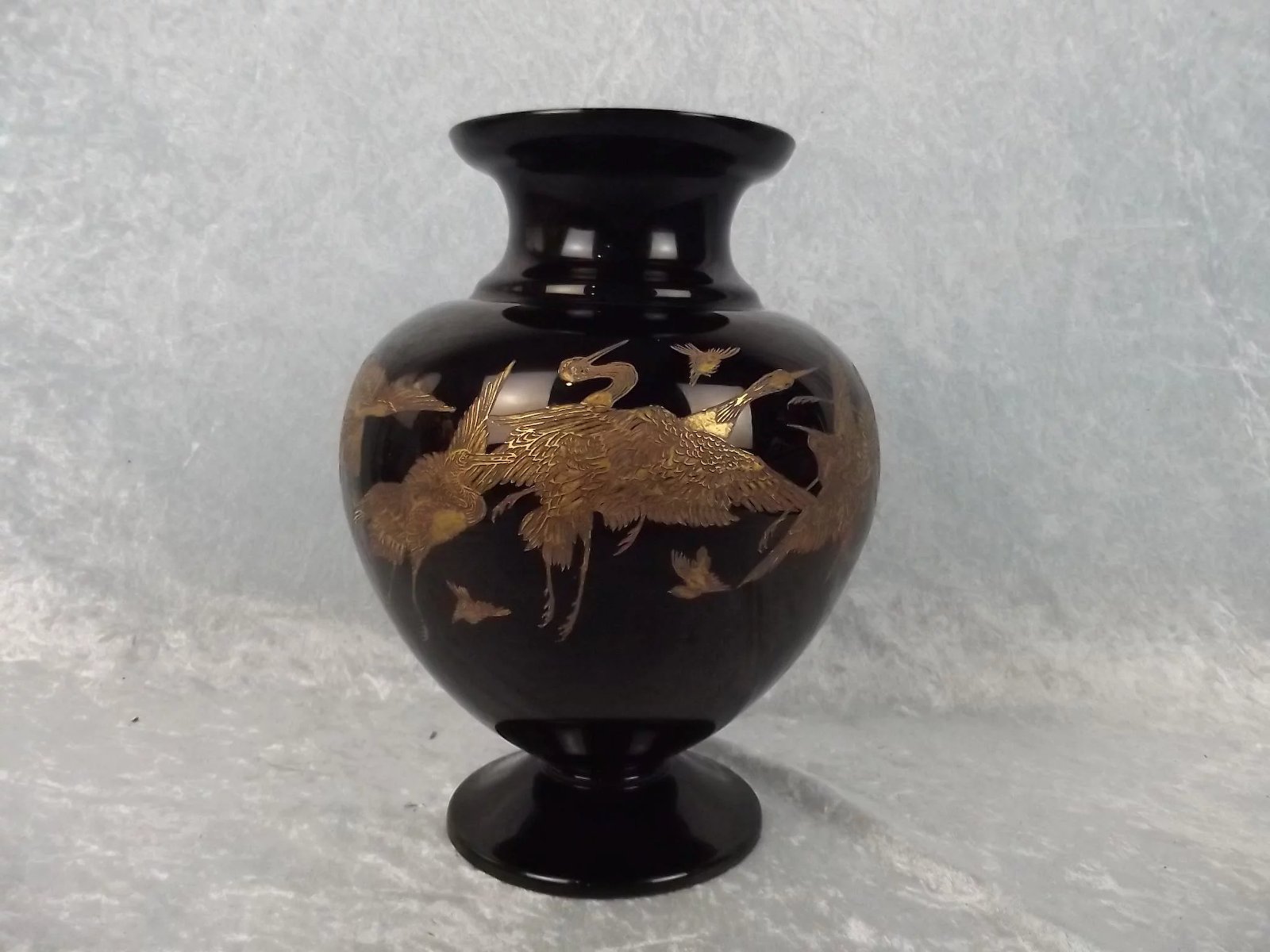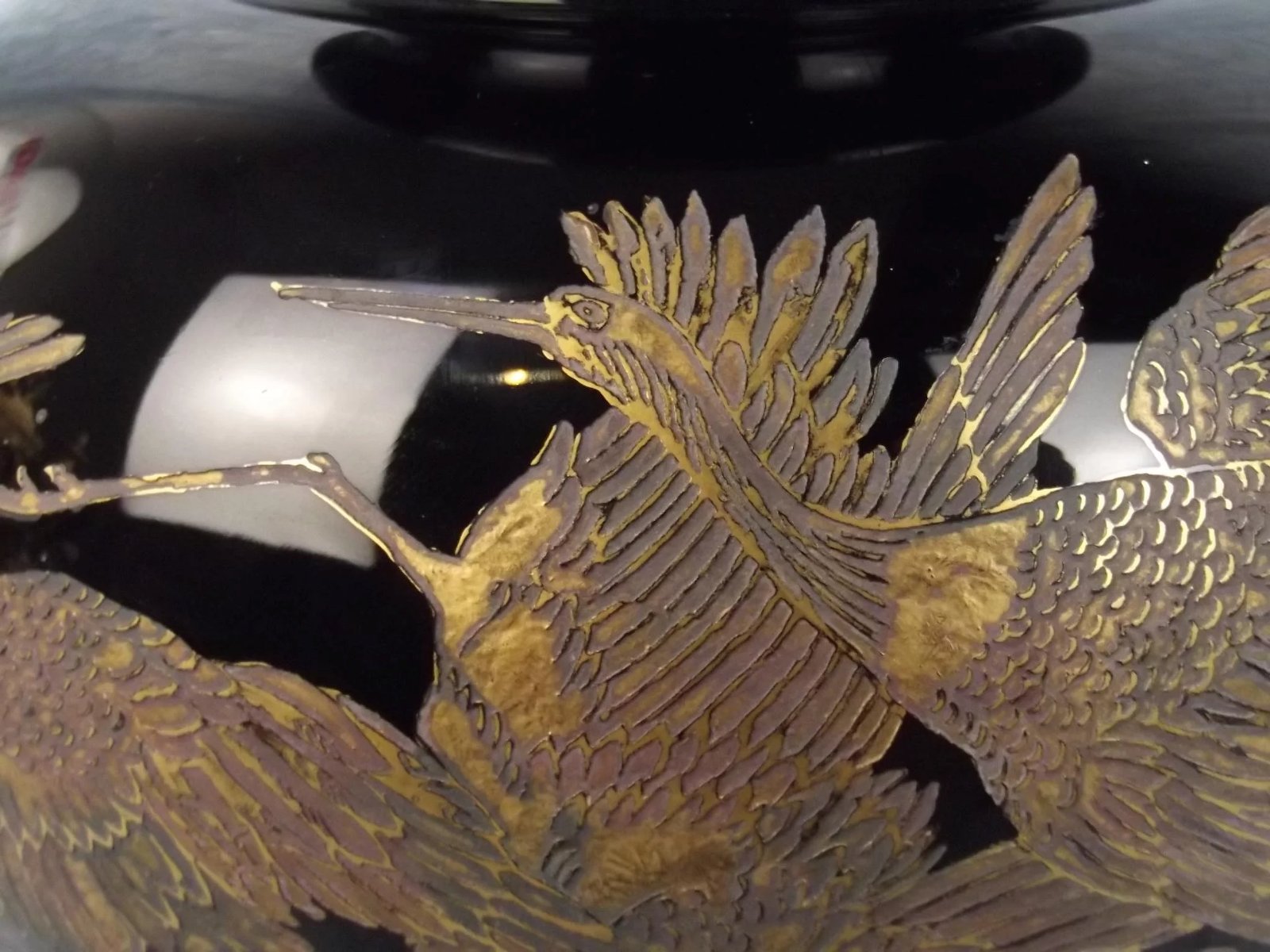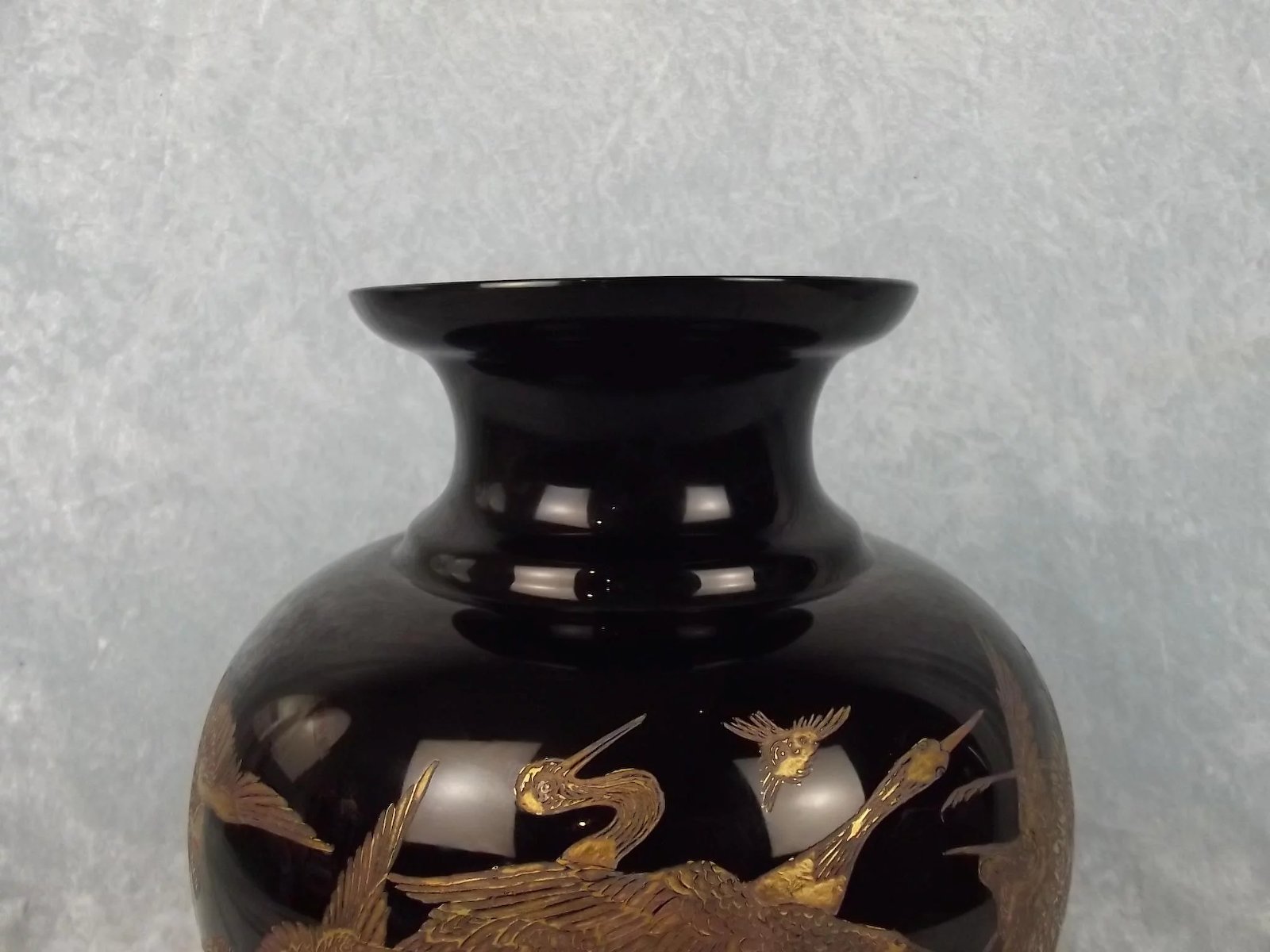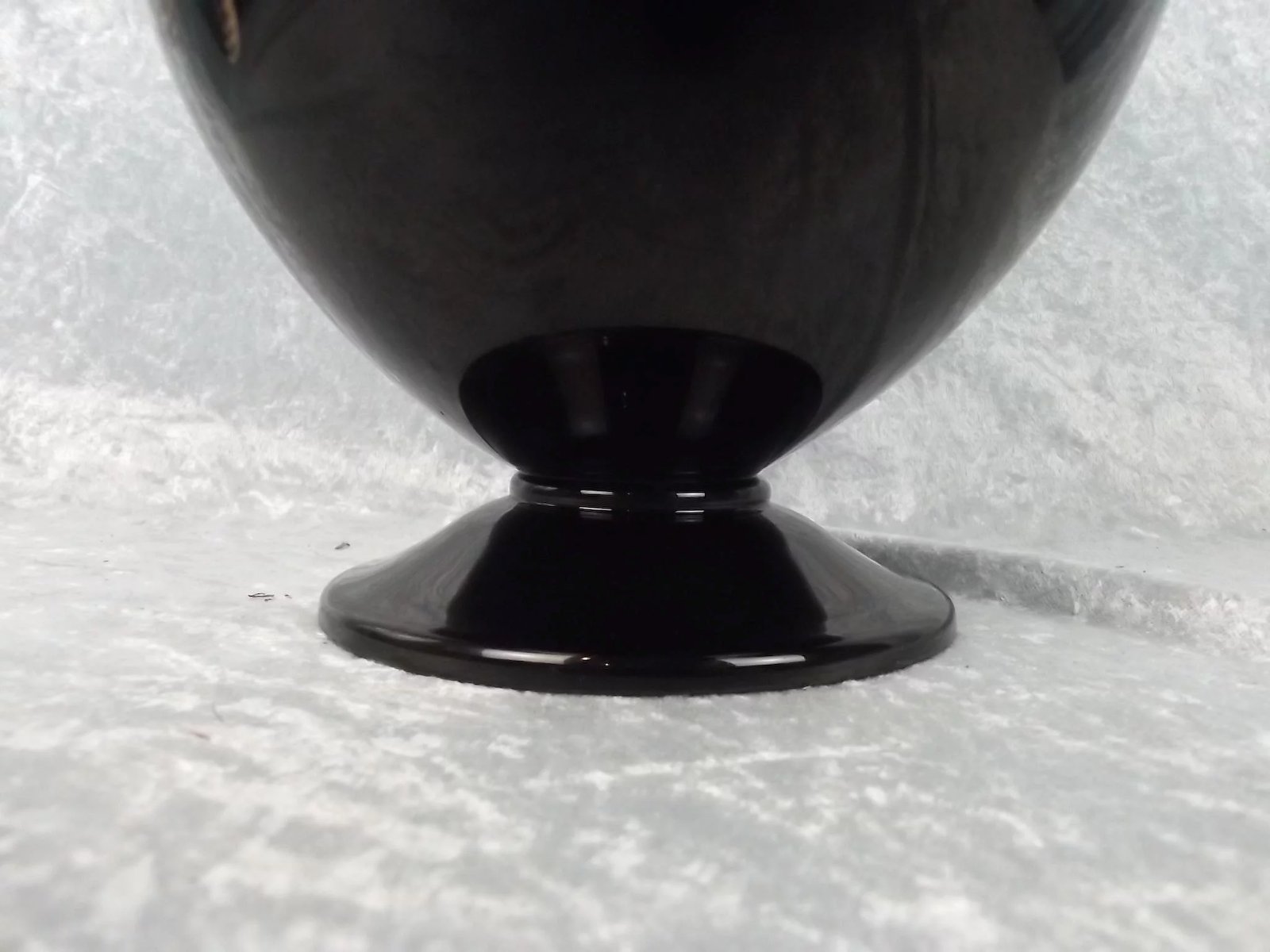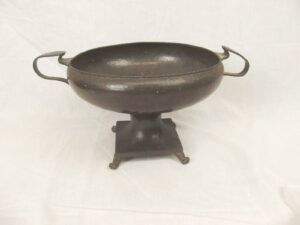~ Moser Black Hyalit Glass Crane Vase Designed By Rudolf Wels Circa 1922 ~
This is a strikingly beautiful vase made from black hyalit glass. The gilt decoration features 13 large cranes and 4 smaller birds.
It bears the Moser back stamp to the underside.
~ Ludwig Moser & Rudolf Wels~
When Ludwig Moser died in 1916, his sons Gustav, Richard, and Leo became the owners of the company. At this time, Leo Moser became the technical and artistic director, and he realized that in order to remain competitive, changes had to be made in production and marketing. Rather than small scale production, the firm would begin large scale operations and exports to other countries. As part of this effort, the cutting workshop had to be expanded, and the administration building had to be modernized. The young architect Rudolf Wels of Novy Bor was contracted to design these (and other) additions. As a result of this relationship, Wels was given the opportunity to design glassware for the firm.
Although Moser had done work for outside designers (to include Josef Hoffmann at the prestigious Wiener Werkstätte), Rudolf Wels became the first outside artist to work directly for the firm. In 1922, Wels designed a series of black hyalith glass pieces with oroplastic decoration, which drew on a retrospective look at the orientalist themes of the late 19th century – (dragons, cranes, flying herons). This vase is part of that series and is richly covered with acid carving around the entire body of the vase with no fewer than ten birds in a natural setting, all decorated in gold.
In subsequent years, Wels designed drinking glasses that were displayed at the International Exhibition of Decorative Arts in Paris in 1925. In 1926, he created the “Animor” series of colored glass vessels with oroplastic decoration depicting exotic wild animals. He also designed numerous buildings, including schools, hotels, office buildings, and apartments. He designed film sets and was artistic director of four feature films in the 1930s.
Sadly, the stark blackness of his beautiful line of vases for Moser foreshadowed tragedy to come. In 1942, Rudolf, his wife Ida, and their son Martin were interned in Terezin before being moved to Auschwitz concentration camp a year later. In 1944, he and his family were part of the 7,000 inmates of the “family camp” who were killed in the gas chambers there.
~ Dimensions ~
The vase has a maximum diameter of 7.75 inches (19.5 cm) and a height of 10 inches (25.5 cm). It weighs 2.163 Kg.
~ Condition ~
The piece remains in excellent condition, it is free from chips and cracks. There is a respectable minor degree of standing wear to the base, consistent with its age.


